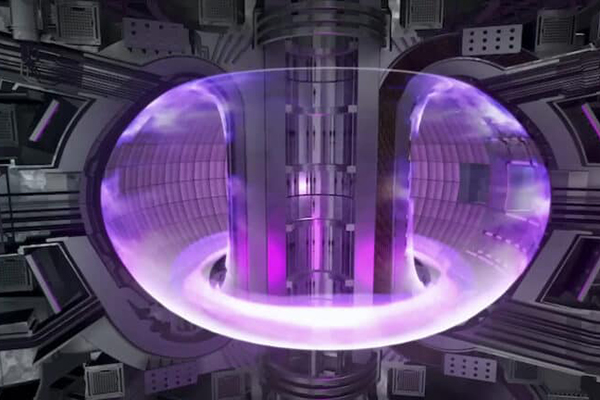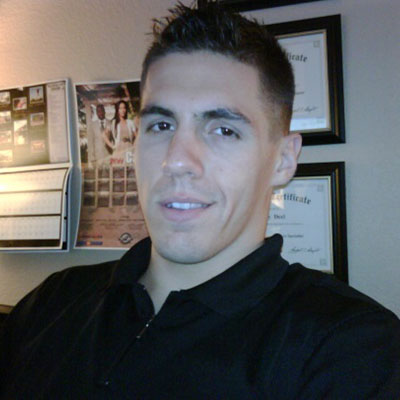By Dr. Gary L. Deel | 04/07/2022

Currently, the human species burns fossil fuels at an unprecedented rate to satisfy our energy needs. This practice produces greenhouse gases, which are causing a significant change to our global climate on a scale that has created catastrophic consequences all around the planet, according to the United Nations.
In response to this crisis, we have begun to shift away from fossil fuels. The Center for Climate and Energy Solutions notes that we are slowly developing alternative “renewable” energy production technology, such as wind and solar power. However, these technologies can be expensive and inefficient, and they are barely putting a dent in the global warming problem at our current rate of development.
California Experiment in Nuclear Fusion Hints at a Promising Future for Clean Energy
For decades, some scientists have contended that controlled nuclear fusion – if it could be achieved – might solve the world’s energy predicament, according to CNN. This type of nuclear fusion would involve a highly efficient nuclear reaction that produces heat energy, but without any greenhouse gases, radioactive waste or the threat of nuclear meltdown. Unfortunately, many skeptics have argued that controlled nuclear fusion was an unachievable fantasy, according to Fortune.
But on December 5, 2022, researchers at the Lawrence Livermore National Laboratory (LLNL) in Livermore, California, proved the naysayers wrong. According to a press release, LLNL researchers conducted an experiment, which demonstrated that controlled nuclear fusion is feasible. The importance of this breakthrough cannot be overstated; it carries the potential to revolutionize energy production around the world.
But for the layperson, some fundamental questions emerge in reaction to this news, such as:
- What is nuclear fusion, anyway?
- We’ve had nuclear bombs and nuclear power plants for ages now, so how is this form of power any different?
- Why should we care about nuclear fusion?
An Interview with a Nuclear Physics Expert at the University
I am by no means a nuclear physics expert. But luckily, I have a colleague – Mr. J. J. Marra of the University’s School of Science, Technology, Engineering and Math (STEM) – who is. And I was fortunate enough to be able to chat with J.J. in order to have him explain what this news means and why this recent breakthrough is so important to the future of energy on Earth.
Gary Deel: What is nuclear fusion?
J.J. Marra: Nuclear fusion is a reaction in which two or more nuclei “fuse” together. The resulting reaction produces energy in the form of heat and radiation. There are many types of reactions that could result in nuclear fusion, but the reaction that researchers are currently working on for commercial power applications is the deuterium-tritium or “D-T” reaction.
In this reaction, deuterium and tritium (two isotopes of hydrogen) fuse together to produce a helium atom, a neutron, and residual energy in the form of heat. This is the same reaction that occurs in the Sun. This particular reaction is of interest to scientists because the fuel is readily available or producible, and the temperatures required for the reaction are achievable.
Gary Deel: How does nuclear fusion differ from nuclear fission and the kinds of nuclear power that are used in today’s nuclear power plants and nuclear bombs?
J.J. Marra: The reaction that is used to power the world’s nuclear power plants is nuclear fission. In nuclear fission, the nucleus of an atom is split. Similar to nuclear fusion, this reaction also produces energy in the form of residual heat. Fission reactions that are used to power nuclear reactors are specifically chosen to be self-sustaining reactions.
Commercial power plants use enriched uranium for this reaction. Enriched uranium is made by increasing the amount of uranium isotopes best suited for a chain reaction from the uranium that is most commonly found naturally on Earth.
In these power plants, uranium atoms are bombarded with neutrons, which results in the production of two smaller elements, energy (in the form of heat), and neutrons. Those neutrons then interact with other uranium in the reactor core, releasing even more energy and neutrons. And so the chain reaction continues.
The reaction is controlled by “poisons” – elements like boron that absorb the neutrons so that they are not available to bombard the uranium. At some point, the uranium is no longer in the form where it is capable of this self-sustaining reaction. The resulting material is considered waste, but its radioactivity makes it a challenge to dispose of and store.
The fission reaction that occurs in nuclear power plants is the same reaction that occurs in atomic bombs. According to Science Direct, the reaction is slow and controlled in a power plant. But in atomic bombs, the fission reaction occurs almost in an instant, and all of the energy is released at once.
However, we also have hydrogen bombs, which rely on a fusion reaction between hydrogen atoms. But in hydrogen bombs, the fusion reaction is uncontrolled, according to the U.S. Department of Energy. The key breakthrough with this newest D-T fusion experiment is the apparent ability to control the fusion reaction for regulated and sustained energy output.
Gary Deel: What does nuclear fusion mean for future energy production?
J.J. Marra: Nuclear fusion is a great option – maybe the best option – for clean energy to meet worldwide energy demands. And this is for three main reasons. First, the process produces a large amount of energy from a small amount of material. The Department of Energy says that the “D-T” reaction using the deuterium from a single gallon of seawater can produce as much energy as 300 gallons of gasoline.
Tritium is also needed for the reaction. But in many fusion reactor designs, it’s believed that tritium can be produced from lithium in the fusion reaction itself.
Second, the reaction is environmentally friendly. Unlike fission, the reaction itself doesn’t produce any radioactive nuclear waste. And unlike conventional power plants, it doesn’t emit any greenhouse gases, because the heat from the reaction is used to power a turbine that runs on steam.
Finally, the fusion reaction doesn’t carry any of the risk of a nuclear accident – like the events in Chernobyl, Three Mile Island and Fukushima. This decreased risk is because the fusion reaction is not a chain reaction like fission. It’s easy to envision energy from nuclear fusion as abundant, reliable, clean and safe.
Gary Deel: Why is this breakthrough in nuclear fusion such a big deal?
J.J. Marra: Fusion reactions – and specifically the “D-T” reaction – have been pursued as a potential for commercial power applications since the 1920s. The World Nuclear Association says that advancements in fusion over the decades have included combined use in nuclear fission weapons and various concept demonstrations – all necessary to validate the theory and achieve the environmental conditions necessary for the reaction.
The recent discovery made at LLNL is significant in that scientists were able to create a “D-T” fusion reaction that resulted in a net energy gain – an event that is referred to as “fusion ignition.” According to LLNL, scientists used lasers to create the environment necessary for the reaction, and the resulting energy output was about 50% greater than the energy input.
The reaction was accomplished on a very small scale – a small amount of fuel produced a small amount of energy and for a very short duration. But this accomplishment is a major breakthrough and was the culmination of decades of work and billions of dollars of scientific research to advance this technology. It holds the promise that someday, this technology might be scaled up and industrialized to provide safe, clean power throughout the world.
Mr. J. J. Marra is a faculty member in the School of Science, Technology, Engineering and Math. He holds M.S. degrees in Mechanical and Nuclear Engineering. J.J. teaches natural science and engineering courses for the University.
